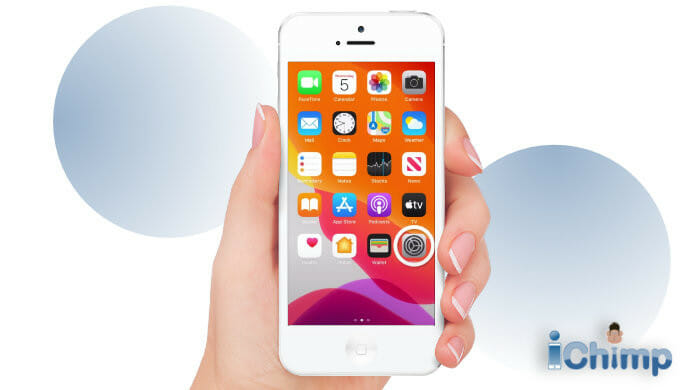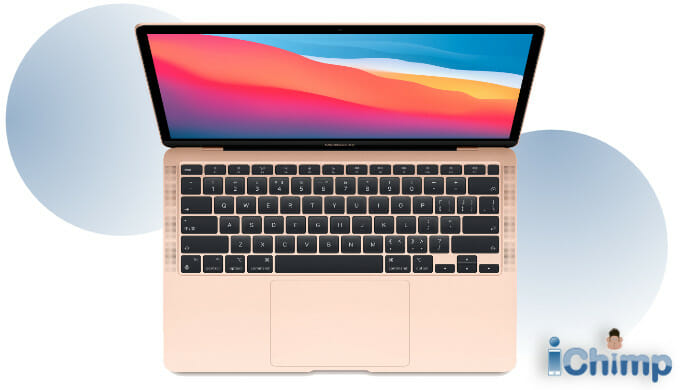This guide contains verified methods that we use to remove Activation Lock on MacBook Air computers.
The iCloud Lock is available on M1 and M2 MacBook Air laptops or with the Apple T2 Chip. This means all MacBook Air laptops released since 2018 have this security feature.
The Activation Lock, also known as the iCloud lock, is part of Apple’s security system and is administered via Find My Mac. The lock is found on all new Mac computers.
This security system replaced the EFI lock used on older MacBooks that prevented unauthorized access to the device and its data.
This guide explains how to disable Activation Lock on MacBook Air computers released since 2018.
Advertisement
The tried and tested removal techniques described in this guide are specific to the following MacBook Air models:
| Model | Processor | Model identifier |
| MacBook Air 3rd generation (Retina, 13-inch, 2018) | Intel processor with T2 Chip | MacBookAir8,1 |
| MacBook Air 3rd generation (Retina, 13-inch, 2019) | Intel processor with T2 Chip | MacBookAir8,2 |
| MacBook Air 3rd generation (Retina, 13-inch, Early 2020) | Intel processor with T2 Chip | MacBookAir9,1 |
| MacBook Air Apple Silicon (M1, Late 2020) | M1 Chip | MacBookAir10,1 |
| 15-inch MacBook Air (M2, 2023) | M2 Chip | Mac14,15 |
| 13-inch MacBook Air (M2, 2022) | M2 Chip | Mac14,2 |
Free iCloud unlocking on MacBook Air
If the on-screen iCloud Activation Lock error message prevents you from using your Mac, the official solution is to use your Apple ID and password to switch off Find My Mac.
If you can’t remember your password, you can use the iForgot website to reset them. Go to the website and follow the on-screen instructions to reset your password.
If you don’t remember your Apple ID, you can try the following :
- On another Apple device you own, go to iCloud or Media and purchases.
- On a different Apple Mac you own, look at System preferences. > Apple ID.
- On your Apple TV, go to Settings > Apple ID
- On your Apple ID recovery page, click the link that says If you have forgotten your Apple ID, you can look it up.
For more information, see reset your Apple signin credentials.
Via Mac
To remove Activation Lock on a MacBook Air you need to turn off Find My Mac. The easiest way to do this is as follows:
- On your computer, click the Apple menu > System Preferences.
- On the System Preferences dialog, click Apple ID.
- In the left sidebar, select iCloud.
- On the right, deselect Find My Mac.
Via iPhone, iPod Toch, or iPod Touch
Advertisement
To turn off Find My Mac and Activation Lock on another device you own, such as an iPhone, do the following:
- On your other device, tap Settings.

- Tap on [your name].

- Scroll down and select the MacBook Air.
- Tap Remove from account.
- Click Remove.
- Activation Lock and Find My Mac will be disabled.
For more information, see remotely disable Find My.
Via Apple website
The Activation Lock can be removed online by disabling Find My Mac via a web browser as follows:
- Go to appleid.apple.com.
- When prompted, Sign in.
- On the left menu, click Devices.
- Select the MacBook Air from the devices list.
- Click the Remove from account button.
Video instructions
Paid Activation Lock removal
If you can’t get in touch with the previous owner you can remove the Activation Lock yourself using a tool or service.
There are many companies online that claim they are able to bypass the lock but my testing has shown most of them don’t work. You need to be careful and use a recommended company to avoid being ripped off.
Scams to watch out for:
- Fake tools.
- Online services that don’t work.
- PDF downloads.
Pricing
Prices range from $30 USD to $100 USD for an iCloud unlock.
One thing we noticed was the tendency for suppliers to break their fees into 2 parts:
- A deposit.
- A final fee.
Obviously, it is in the supplier’s interest to look inexpensive so they tend to keep the deposit cost down. However, they increase the price by charging a much bigger final fee which brings the overall price up. This payment structure is very spammy and does not instill confidence in the process.
When we looked for the best iCloud tools and services, we took this odd payment structure into account. In an ideal world, it would be a straightforward one-off fee.
The good and bad things about paying for an iCloud unlock
Good
- Once completed, you can use your laptop normally.
- All functions and features work.
- The fix is permanent – you only need to do it once.
- No special technical skills are required.
Bad
- Most advertised services don’t work.
- You have to pay to get it done.
- You have to wait a while for it to be unlocked.
Online services
In a recent review, I tested a range of tools to find the best online iCloud bypass service that can remove the Activation Lock. I concluded the best service at this time was provided by DirectUnlocks.
At the time of writing, the unlock fee was £19.99 GBP, which is around $28 USD.
To find out more, see the iCloud Activation Lock bypassing guide.
To unlock your Mac computer using this service:
- Go to DirectUnlocks.
- Enter your computers serial number.
- In the device model drop-down menu, pick Mac.
- Click Unlock iCloud!
- To continue, agree to the terms and conditions.
- Choose your preferred payment method.
- Provide your contact details and wait for an email confirming the unlock has been completed.
Tools
There are many software tools that claim to hack the Activation Lock so it is removed. We found none of them work. Indeed, they can break your device, infect your computer with viruses, and even open yourself up to fraud.
This may change with time as the tools improve.
Using bypass code
Apple tries to make it easy for businesses and schools to manage their stock of Apple products, such as Mac computers. They include a management suite that allows the organization to remotely control the devices given to their students or employees.
If you have a managed MacBook Air for example, then it can be controlled by the organization that gave it to you. Among other things, this allows organizations to remove the Activation Lock from supervised devices prior to device activation without knowing the userʼs personal Apple ID and password.
This is done via the profile manager by using an Activation Lock bypass code.
The bypass code does not work for all Apple devices, only for those controlled by an organization like a business or school.
So if you have a standard shop-bought Apple laptop you use at home, then you won’t be able to get rid of the Activation Lock using a bypass code as it is not a supervised business device.
MacBook Air security
Find My Mac is part of the Find My system that helps find lost or stolen Apple devices. However, on newer computers, it also protects laptops from theft by allowing remote locking and remote data removal.
When you enable Find My Mac on your computer, the Activation Lock is automatically turned on. So if your device is stolen, it is almost impossible for anyone else to use it unless they know your Apple ID and password.
For a MacBook Air to be fully compatible with Find My Mac, it also needs the following:
- macOS Catalina or newer installed.
- Two-factor authentication for Apple ID enabled.
- On a MacBook Air 3rd generation or newer, the security policy must be set to Full Security.
- On a MacBook Air M1 with Apple Silicon, startup security must be set to Secure Boot and Disallow booting from external media.
To find out more, see Activation Lock for Mac.
Wrap up
With the advent of the T2 security processor and Apple Silicon, more and more buyers of used Mac computers are being blocked from using their second-hand devices due to Find My Mac.
This issue is become more commonplace and has resulted in a flood of scammers appearing online to take advantage of the situation.
If you want to avoid this hardship, check the status of the iCloud Lock on the computer before you buy it to make sure it is switched off.
Your only other choice is to use the Apples recommended solution to turn off Find My Mac and bypass iCloud Activation Lock. However, remember that to do this you need to know the Apple ID and password.
Affiliate statement
If you click a link to go through to a provider, we may get paid. This only happens if you buy a service. This is what funds us, and keeps us free to use. For a more detailed explanation see our affiliate disclosure.







